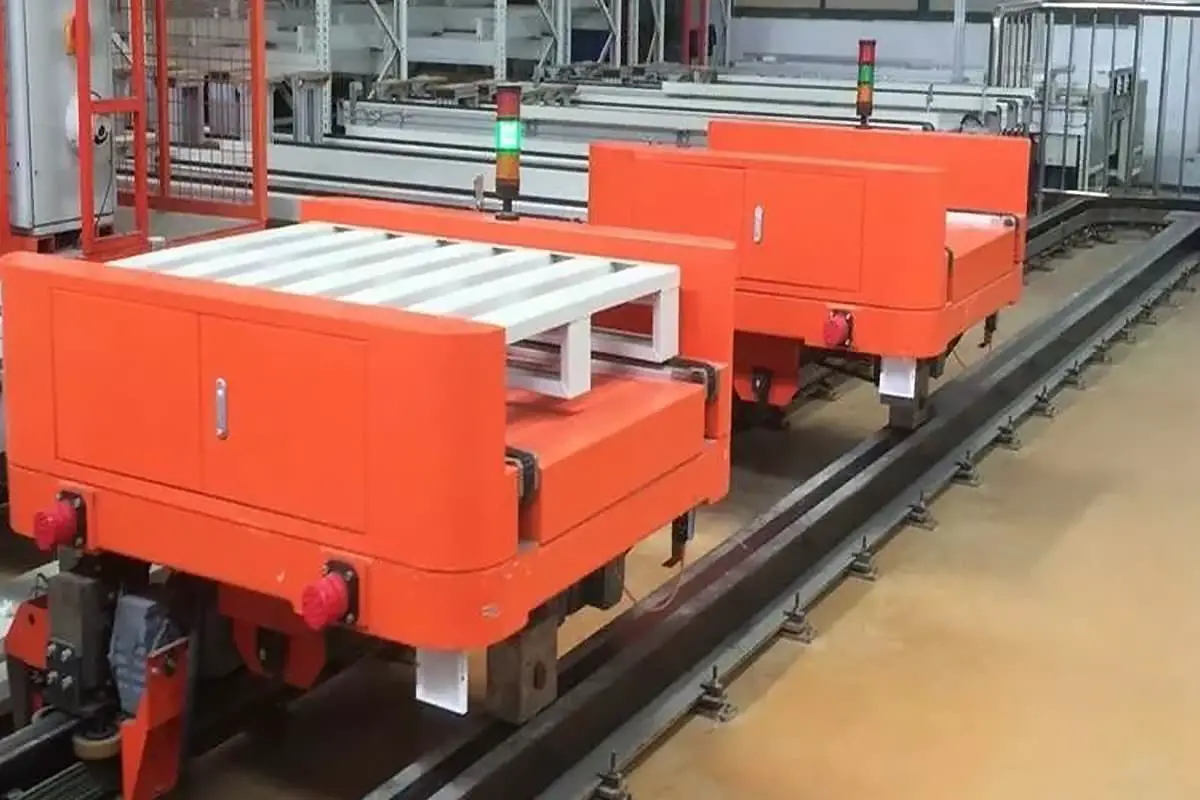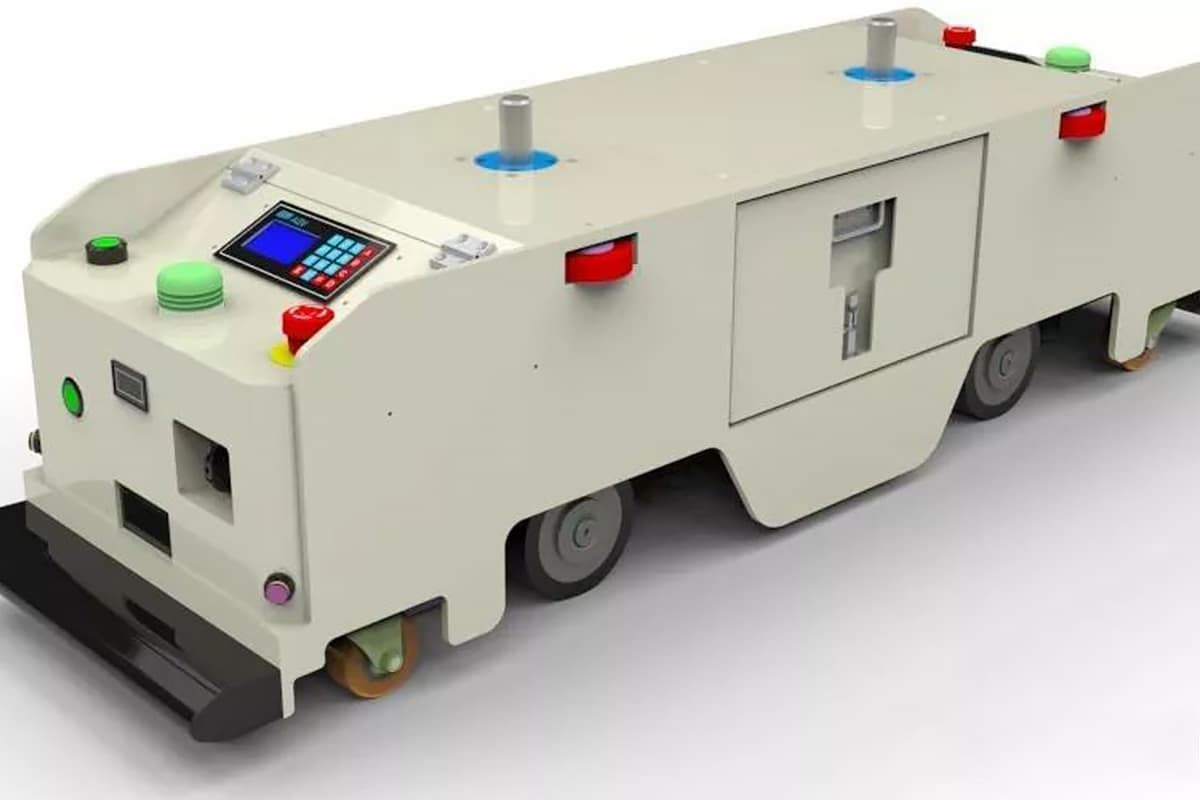
Have you ever wondered how modern warehouses operate so efficiently? This article explores the fascinating world of mobile handling robots—AGV, RGV, and IGV. Learn the differences between these robots and discover how they revolutionize logistics, making operations faster and smarter. Get ready to uncover the secrets behind their impressive capabilities!

As one of the core equipment in intelligent logistics, mobile handling robots have seen explosive growth in recent years. In the mobile robot market, besides the well-known AGV, RGV and IGV are also playing their roles in the automated logistics system.
However, many don’t have a clear concept of the differences between AGV, IGV, and RGV. Through this article, we will clarify.

With the rapid rise of intelligent manufacturing, the ensuing fourth industrial revolution has led to rapid development in the intelligent manufacturing industry. Mobile handling robots, as one of the core pieces of equipment in intelligent logistics, have presented explosive growth in recent years.
In the mobile robot market, besides the common AGV, RGV and IGV have also rapidly emerged in the field of automated logistics.
RGV, or Rail Guided Vehicle, is commonly used in high-density storage methods for vertical warehouses. The vehicle’s path can be designed to be as long as necessary, and there’s no need for additional equipment to enter the aisle when moving or transporting goods. This results in speedy, safe operations that can effectively improve the efficiency of the warehouse system.
It can also be used for the connection and transfer between parallel conveyor lines, realizing logistics connectivity. Its main characteristic is that it has a physical track on the ground and walks along this inherent track with relatively single routes.

AGV stands for Automated Guided Vehicle. It is an advanced transport system equipped with sophisticated guidance technologies, including electromagnetic, optical, laser, or GPS-based navigation systems. AGVs are designed to autonomously travel along predefined paths or dynamically planned routes within industrial environments, offering a high degree of flexibility and efficiency in material handling operations.
These vehicles are engineered with multiple safety features, such as obstacle detection sensors, emergency stop buttons, and collision avoidance systems, ensuring safe operation alongside human workers. AGVs can perform a wide range of transport functions, including raw material delivery, work-in-progress movement, and finished product handling, adapting to various load types and sizes.
In contrast to Rail Guided Vehicles (RGVs), AGVs offer superior flexibility in path design and execution. Their routes can incorporate straight lines, turns, intersections, and merging paths, allowing for complex layout configurations. This adaptability enables AGVs to navigate through diverse factory layouts, warehouses, and distribution centers, optimizing space utilization and streamlining material flow.
Furthermore, modern AGVs are often integrated with facility management systems and can be reprogrammed to accommodate changes in production processes or facility layouts, providing a scalable solution for evolving manufacturing and logistics operations.

IGV, or Intelligent Guided Vehicle, represents a significant advancement in industrial automation that has emerged in recent years. This innovative technology offers substantial improvements over traditional AGV (Automated Guided Vehicle) systems, particularly in terms of operational flexibility and adaptability.
Unlike AGVs, which typically rely on fixed markers or predefined paths, IGVs utilize advanced sensing and navigation technologies to operate autonomously within dynamic environments. This marker-less navigation capability allows IGVs to dynamically adjust their routes in real-time, responding to obstacles, changes in factory layout, or shifting production demands.
The flexible pathfinding of IGVs offers several key advantages:
The intelligent scheduling capabilities of IGVs allow for seamless integration with Manufacturing Execution Systems (MES) or Warehouse Management Systems (WMS), enabling real-time optimization of material handling tasks based on current production priorities.
While IGV technology offers significant benefits for many manufacturing and logistics operations, it’s important to note that the optimal choice between AGV and IGV systems depends on specific facility requirements, existing infrastructure, and the degree of flexibility needed in material handling processes.

In summary, RGV (Rail Guided Vehicle), AGV (Automated Guided Vehicle), and IGV (Intelligent Guided Vehicle) are all utilized for automated material handling and transfer in industrial settings. However, they exhibit varying levels of automation and intelligence, with IGV demonstrating the highest degree, followed by AGV, and then RGV. RGVs operate along fixed tracks, AGVs rely partially on navigational aids such as barcodes and QR codes, while IGVs function with complete autonomy.
The evolution from RGV to IGV reflects a significant trend in mobile robotics development: increased intelligence, reduced dependence on auxiliary infrastructure, and enhanced operational flexibility. This progression aligns with the broader industry movement towards smart manufacturing and Industry 4.0 principles.
However, it’s crucial to note that the emergence of IGVs does not necessarily render other systems obsolete. Each technology has its unique advantages in specific application scenarios:
The choice between these systems depends on various factors, including:
In the current industrial landscape, there is no absolute rule dictating that higher automation or intelligence will completely supplant lower-tech solutions. The optimal choice often involves a hybrid approach, combining different technologies to achieve the most efficient and cost-effective material handling solution tailored to the specific needs of each facility.
RGVs are integral components in advanced logistics systems and production lines, offering seamless integration with warehousing stations, buffer zones, conveyors, elevators, workstations, and robotic systems. Their automated material transport capabilities, governed by sophisticated planning algorithms and real-time instructions, significantly reduce operational costs while enhancing overall efficiency.
Operating on precision-engineered rails, RGVs are optimized for specific application scenarios. They are primarily categorized in two dimensions:
Functional Classification:
Movement Classification:
Structurally, an RGV comprises several key components:
RGVs excel in operational stability due to their streamlined design, demonstrating resilience to environmental disturbances and requiring minimal specialized operation. This translates to reduced failure rates, lower maintenance costs, and exceptional reliability in industrial settings.
However, the fixed-rail nature of RGVs presents certain limitations. Once a route is established, modifications can be complex and costly, potentially impacting layout flexibility and system scalability. Despite these constraints, RGVs maintain high operational efficiency within their designed parameters.
In summary, RGVs offer a compelling solution for industries seeking to optimize material flow and assembly processes, particularly in environments where predictable, high-volume transport is essential. Their implementation requires careful consideration of long-term production needs and potential future adaptations to maximize the return on investment.
AGV (IGV) systems are widely used in e-commerce warehousing and manufacturing industries. They are the best choice for many manufacturing enterprises to improve production efficiency and reduce production costs.
Compared to RGVs, they have a higher degree of automation and intelligence.
Their routes can be flexibly changed according to warehouse storage requirements and production processes, and the cost of changing operating paths is very low compared to traditional conveyor belts and rigid conveyor lines.
Compared to RGVs, AGVs have a wider range of application scenarios. They play a significant role in machining, warehousing, assembly, and other manufacturing processes, and have even become one of the most symbolic configurations of modern intelligent factories.
The AGV is typically composed of the following components:
Chassis: Comprised of the frame and corresponding mechanical devices, it serves as the base of the AGV, and the foundation for the installation of other components.
Battery and Charging Devices: Composed of charging stations and automatic charging units, the AGV can complete automatic online charging. Managed by the central control system, it enables 24-hour continuous production.
Drive System: Made up of wheels, reduction gears, brakes, drive motors, and speed controllers. It controls the normal operation of the AGV. Operating instructions are issued by the computer or manually, with speed, direction, and braking adjustments controlled by the computer. For safety, brakes are mechanically applied in case of power failure.
Guidance System: Receives directional information from the guidance system to ensure the AGV travels along the correct path.
Communication Devices: Facilitates information exchange between the AGV and the control console as well as monitoring equipment.
Safety and Auxiliary Devices: To avoid collisions when the system malfunctions or personnel cross the AGV’s work route, AGVs generally come equipped with obstacle detection and collision avoidance, alarms, visual alerts, and emergency stop devices.
Transfer Devices: Directly contacts the cargo being transported, enabling the transfer of goods. Different transfer systems can be selected based on the task and site conditions, with common ones being roller, forklift, and robotic arm systems.
Central Control System: Comprised of a computer, task collection system, alarm system, and related software. It mainly consists of a ground (upper) control system and an onboard (lower) control system. The ground control system, a fixed equipment in the AGV system, is primarily responsible for task allocation, vehicle scheduling, path (line) management, traffic management, and automatic charging. Upon receiving instructions from the upper system, the onboard control system handles AGV navigation calculations, guidance implementation, vehicle movement, and loading and unloading operations.
Characterized by wheeled movement, AGVs offer advantages over walking, crawling, or other non-wheeled robots, including swift action, high work efficiency, simple structure, strong controllability, and good safety.
Compared with other commonly used equipment in material transport, AGVs do not require the installation of fixed devices like tracks or support frames, and are not limited by terrain, roads, or space.
Therefore, they can fully demonstrate their automation and flexibility, achieving efficient, economical, and flexible unmanned production. Their advantages mainly lie in:
As a branch of wheeled mobile robots, the main feature of AGV is automatic guidance. With the development of various technologies, AGV guidance technology is also constantly improving.
Commonly used guidance methods include: electromagnetic guidance, magnetic tape guidance, color tape guidance, laser guidance, inertial guidance, visual guidance, GPS guidance, and coordinate guidance.
Drive Modes
The commonly used drive modes of AGV can be summarized into four types: single-wheel drive, differential drive, dual-wheel drive, and omnidirectional drive. Depending on the number of wheels, there are mainly three-wheel and four-wheel models. When choosing a model, it is selected based on the actual road conditions and functional requirements of the workplace.
Power Supply
The power supply of traditional AGV is generally provided by batteries as energy storage carriers. The types of batteries that can be used by AGV include: lead-acid/pure lead, nickel-hydrogen, nickel-cadmium, and lithium-ion batteries.
In recent years, with the maturity of battery technology, the application of supercapacitors in AGVs has gradually been promoted, and with the development of contactless energy transfer technology, related products have replaced the traditional power supply mode of AGVs in some areas.
System Control
It is mainly divided into ground (upper) control systems and on-board (lower) control systems. The upper control system effectively controls multiple AGVs, optimizes task sorting, dynamically plans AGV allocation and driving paths, and realizes intelligent traffic management.
The lower control system is responsible for navigation calculations, guidance implementation, vehicle walking, loading and unloading operations, etc., after receiving the instructions of the upper system.
The Automated Guided Vehicle (AGV) market is experiencing robust growth, expanding beyond its traditional strongholds. While historically dominant in large-scale industries such as automotive and tobacco manufacturing, AGVs are now gaining significant traction in electronics and home appliance sectors, driving substantial sales growth.
Moreover, the adoption of AGV technology has broadened considerably, penetrating diverse industrial landscapes. Construction machinery, pharmaceuticals, power generation, chemical processing, paper manufacturing, defense, and advanced materials industries are increasingly leveraging AGV capabilities to enhance operational efficiency and productivity.
Within manufacturing enterprises, AGV applications have transcended their conventional roles in warehousing and material handling. These versatile machines are now being deployed across various stages of production processes, from raw material delivery to work-in-progress movement and finished product management. This expansion is driven by advancements in AGV technology, including improved navigation systems, enhanced safety features, and greater payload capacities.
While established foreign brands continue to maintain a competitive edge, particularly in high-precision and specialized applications, domestic AGV manufacturers are rapidly closing the gap. Chinese companies, in particular, are making significant strides in R&D, focusing on cost-effective solutions, improved localization capabilities, and integration with Industry 4.0 technologies such as artificial intelligence and the Internet of Things (IoT).
The evolving AGV landscape is characterized by increasing customization, with manufacturers offering tailored solutions to meet specific industry requirements. This trend, coupled with the growing emphasis on smart manufacturing and automation, is expected to further accelerate AGV market growth in the coming years.
Key Points for AGV Selection:
1. Analyzing Total Cost of Ownership (TCO)
2. Deciding Between AGV (Automated Guided Vehicle) and AGC (Automated Guided Cart)
3. Selecting the Optimal Navigation Method
4. Evaluating the AGV Control System
5. Choosing the Right Service Provider
AGV Selection Process:
1. Identify Selection Requirements
2. Establish a Cross-Functional Selection Committee
3. Research and Evaluate Potential Solutions
4. Assessment and Tender Process
5. Final Selection and Implementation Planning

Intelligent Guided Vehicles (IGVs) represent a significant advancement in Automated Guided Vehicle (AGV) technology, offering enhanced precision, safety, flexibility, and environmental adaptability. These improvements stem from continuous innovation in robotics, artificial intelligence, and sensor technologies.
In terms of navigation, IGVs have revolutionized the guidance system paradigm. While traditional AGVs rely on fixed markers such as QR codes, magnetic strips, or reflectors, IGVs employ advanced navigation techniques based on Simultaneous Localization and Mapping (SLAM) technology. This allows them to generate and update real-time scene maps autonomously, eliminating the need for fixed infrastructure. Consequently, path modifications become remarkably simple and flexible, enabling rapid adaptation to dynamic manufacturing environments.
The flexibility of IGVs extends beyond navigation to their modular design philosophy. These vehicles are engineered to accommodate various functional modules, making them ideal for applications demanding high versatility. In addition to standard material transportation tasks, IGVs can be customized with interchangeable modules such as:
This modular approach allows a single IGV platform to fulfill multiple roles within a facility, adapting to diverse process flows and customer requirements. The ability to reconfigure IGVs on-demand significantly enhances operational flexibility and reduces the need for multiple specialized vehicles, ultimately improving return on investment and space utilization in manufacturing and logistics environments.








